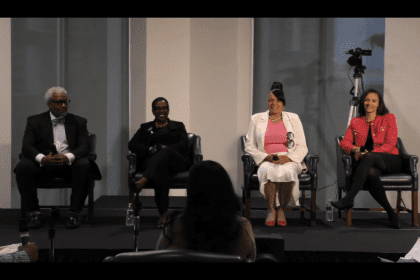
Make blood pressure control your goal
This American Heart Month, the Centers for Disease Control and Prevention and Million Hearts® — a national effort to prevent one million heart attacks and strokes in the United States by 2017 — are encouraging Americans to know their blood pressure, and if it’s high, to make control their goal.
Uncontrolled high blood pressure is a leading cause of heart disease and stroke. In fact, more than 67 million Americans have high blood pressure. People with high blood pressure are four times more likely to die from a stroke and three times more likely to die from heart disease, compared to those with normal blood pressure.
High blood pressure often shows no signs or symptoms, which is why having your blood pressure checked regularly is important. It’s easy to get your blood pressure checked. You can get screened at your doctor’s office and drugstores or even check it yourself at home, using a home blood pressure monitor.
Make Control Your Goal
If you know you have high blood pressure, take these steps to help get it under control:
Ask your doctor what your blood pressure should be. Set a goal to lower your pressure with your doctor and talk about how you can reach your goal. Work with your health care team to make sure you meet that goal. Track your blood pressure over time. One way to do that is with this free wallet card wallet card from Million Hearts®.
Take your blood pressure medicine as directed. Set a timer on your phone to remember to take your medicine at the same time each day. If you are having trouble taking your medicines on time or paying for your medicines, or if you are having side effects, ask your doctor for help.
Quit smoking — and if you don’t smoke, don’t start. You can find tips and resources at CDC’s Smoking and Tobacco website.
Reduce sodium intake. Most Americans consume too much sodium, which can raise blood pressure. Read about ways to reduce your sodium and visit the Million Hearts® Healthy Eating & Lifestyle Resource Center for heart-healthy, lower-sodium recipes, meal plans, and helpful articles.

African American Men: Take Note
While heart disease doesn’t discriminate, your gender, race, ethnicity, and where you live can increase your risk. African American men are at the highest risk for heart disease. About 2 in 5 African Americans have high blood pressure, but only half have it under control.3 A recent article in the American Journal of Preventive Medicine also showed that Americans ages 30 to 74 who live the southeast — specifically, Indiana, Kentucky, West Virginia, Oklahoma, Arkansas, Tennessee, Louisiana, Mississippi, and Georgia — are at higher risk of developing heart disease over the next 10 years than people who live in other parts of the country.4 Many of these states have a large African American population.
Roosevelt, age 51, from Virginia suffered a heart attack at age 45.

Man to Man: Heart to Heart
Roosevelt, a long-time smoker, had a heart attack at age 45. He endured six surgeries, including heart bypass surgery to fix the damage to his heart caused by smoking. Now smoke-free, Roosevelt encourages others to quit smoking as a way to reduce their risk of heart disease.
“A heart attack feels like a hand inside squeezing your heart,” he said. “It’s like the worst Charley horse you can imagine—in your heart.”
About one in five African American adults smokes cigarettes.5 CDC’s Tips from Former Smokers campaign recently shined a spotlight on this statistic and the links between smoking and heart disease among African American men.
“If you have loved ones who care about you, they will support you. Take it one day at a time,” Roosevelt said.
This approach can work not only for people who want to quit smoking, but for those who are trying to eat better, exercise, and control their high blood pressure—all ways to help reduce the chances of heart attack and stroke. A strong support system[649 KB] also helps.
Resources to Help You and Your Loved Ones Make Control the Goal
More information about high blood pressure is available at CDC’s High Blood Pressure website. In addition, the following resources are available to help you and your loved ones make control your goal:
- High Blood Pressure: How to Make Control Your Goal
- Supporting Your Loved One with High Blood Pressure
- African Americans Heart Disease and Stroke Fact Sheet
(Source: CDC)










